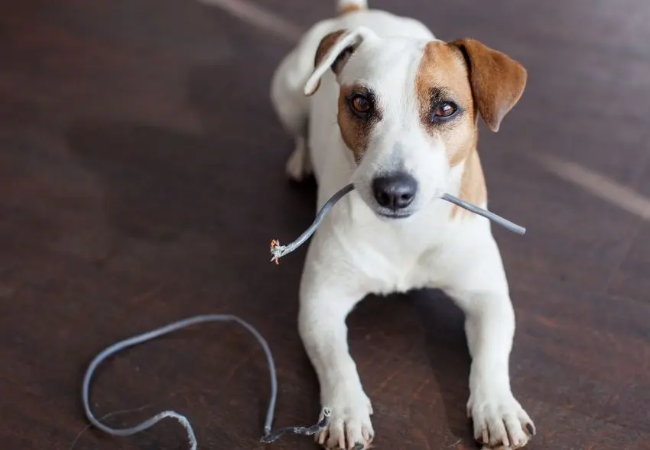Stop Dog Chewing Cables 2025: Vet-Approved Safety Guide 🐶⚡

In this article
Stop Dog Chewing Cables 2025: Vet-Approved Safety Guide 🐶⚡
By Dr. Duncan Houston BVSc
Chewing electrical cables is not just a naughty habit — it’s extremely dangerous. Dogs risk electrocution, burns, and serious injuries, while your home electronics could get damaged. Fortunately, there are safe and effective strategies to prevent this behavior.
🛡️ 1. Manage the Environment
Prevention starts with management. Keep cables out of your dog’s reach whenever possible:
-
Hide cables behind furniture or inside cable management boxes
-
Use protective covers or tubing on exposed cords
-
Elevate cables off the floor or wall-mount them
-
Restrict access to rooms with lots of electronics
By making cables physically inaccessible, you remove the temptation entirely.
🐾 2. Provide Appropriate Chew Toys
Chewing is a natural canine behavior, often driven by boredom, teething, or stress. Offering safe alternatives can reduce the risk of cable chewing:
-
Rubber or nylon chew toys
-
Dental chews that promote oral health
-
Frozen toys to soothe teething puppies
Rotate toys regularly to keep your dog interested and mentally engaged.
🎓 3. Training: Teach “Leave It”
Training is a powerful tool to redirect unwanted behavior:
-
Teach your dog the command “Leave it” using treats and positive reinforcement
-
Reward calm behavior and ignoring the cable
-
Gradually increase distractions while practicing the command
Consistency is key. You can work with a professional dog trainer for guidance if needed.
🚫 4. Use Taste Deterrents
There are safe, bitter-tasting sprays specifically made to discourage chewing. Apply them to cables according to instructions, but always ensure the product is non-toxic and dog-safe.
🏃♂️ 5. Increase Physical Exercise
Dogs often chew when they have excess energy. Regular physical activity can reduce destructive chewing:
-
Daily walks or jogs
-
Interactive play sessions (fetch, tug-of-war)
-
Agility or obedience training
A tired dog is less likely to seek out cables as an outlet for energy.
🧠 6. Provide Mental Stimulation
Boredom is a major trigger for chewing. Keep your dog’s mind active with:
-
Puzzle feeders or treat-dispensing toys
-
Training sessions or learning new tricks
-
Rotating toys to maintain novelty
A mentally stimulated dog is less likely to turn to inappropriate chewing.
🩺 7. Consult a Veterinarian or Behaviorist
If your dog continues chewing despite these strategies, there may be an underlying issue:
-
Anxiety or stress-related behaviors
-
Nutritional deficiencies
-
Medical conditions causing oral discomfort
A vet or certified dog behaviorist can provide a personalized plan and suggest interventions if necessary.
💡 Key Tips
-
Never punish your dog for chewing; punishment can increase anxiety or stress.
-
Redirect them gently toward appropriate chew toys instead.
-
Supervise dogs around cables until they consistently ignore them.
-
Combine environmental management, training, and enrichment for best results.
Preventing cable chewing is a combination of safety, enrichment, and training. With patience and consistent strategies, your dog can learn to chew only on safe alternatives, keeping both your pet and your home protected



